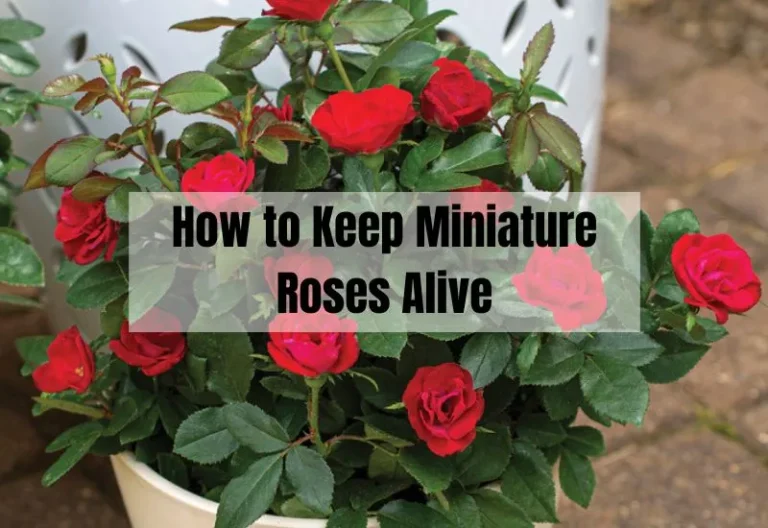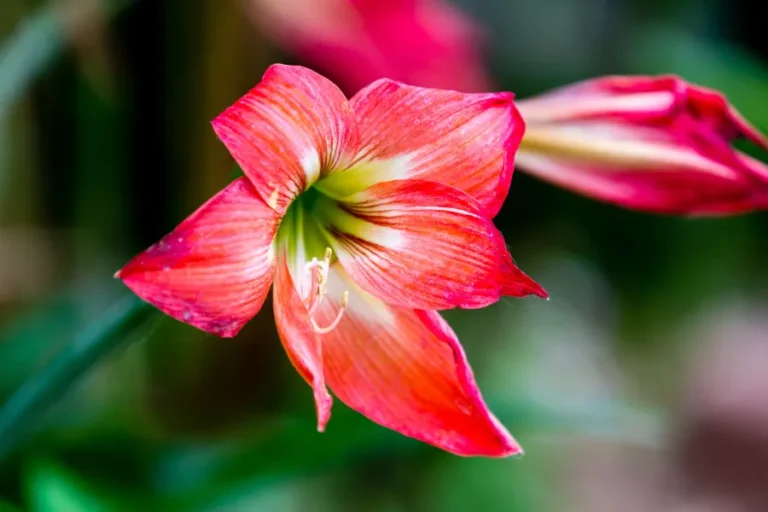Milk for Black Spot on Roses: A Natural Solution
Are you tired of seeing black spots on your beautiful roses? Black spot is a fungal disease that affects roses and can cause leaves to turn yellow and drop off, weakening the plant. But don’t worry, there’s a simple and natural solution that you might not have considered: milk! That’s right, milk can be a powerful tool in the fight against black spot on roses.
According to extensive research, a weekly spray of milk and water is the smartest way to control black spot on roses. Milk contains natural fungicides and has been shown to be just as effective as chemical treatments in preventing and treating black spot.
Not only is milk an effective treatment, but it’s also an affordable and eco-friendly option. Keep reading to learn more about the benefits of using milk to treat black spot on roses and how to use it effectively.
Key Takeaways
- Milk is a natural and effective treatment for black spot on roses.
- A weekly spray of milk and water can prevent and control black spot.
- Milk is an affordable and eco-friendly alternative to chemical treatments for black spot.

Milk for Black Spot on Roses
If you’re a rose gardener, you know how frustrating it is to deal with black spot on your plants. Luckily, there’s a simple and natural solution that you might already have in your fridge: milk!
Spraying a mixture of milk and water on your roses can help prevent or inhibit the growth of black spot, which is caused by the fungus Diplocarpon rosae. This fungus thrives in wet weather, so rose gardeners are most likely to notice it in late spring and early fall.
To use milk as a natural remedy for black spot on roses, follow these simple steps:
- Mix one part milk with two parts water in a spray bottle.
- Shake the bottle well to make sure the milk and water are thoroughly combined.
- Spray the mixture on the leaves of your roses, making sure to cover both the tops and bottoms of the leaves.
- Repeat every week or two, especially during wet weather.
But why does milk work as a natural remedy for black spot on roses? There are a few theories. Some experts believe that the proteins in milk help to create an environment that is hostile to the fungus that causes black spot. Others believe that the calcium in milk helps to strengthen the cell walls of the leaves, making them less susceptible to the fungus.
Whatever the reason, many rose gardeners swear by milk as a natural remedy for black spot. And the best part? Milk is cheap, easy to find, and completely safe for your plants and the environment.
So next time you notice black spot on your roses, don’t reach for the chemical sprays. Instead, try using milk as a natural remedy. You might be surprised at how effective it can be!
What is Black Spot on Roses?
Black spot is a fungal disease that affects roses. The fungus develops as black spots on the leaves, which eventually causes the leaves to turn yellow and drop off. Besides looking unsightly, it can seriously weaken the rose plant.
Black spot on roses thrives during cool, moist weather. It’s important to catch this disease early and take action to prevent it from spreading.
Why Use Milk for Black Spot on Roses?
Milk has been shown to be an effective treatment for black spot on roses. The reason is that milk contains a protein called casein, which has antifungal properties. When sprayed on roses, milk can help prevent the growth of the black spot fungus and even kill it.
Another benefit of using milk is that it’s a natural, non-toxic solution. Unlike chemical fungicides, milk won’t harm beneficial insects or other plants in your garden. Plus, it’s inexpensive and readily available.
Understanding Black Spot Fungus
Knowledge is power, right? So, let’s learn a little more about our enemy, the Black Spot Fungus.
- Identifying the symptoms: Look for black spots (hence the name) on the upper side of leaves. Yellowing and leaf drop may follow. Remember, the earlier you catch it, the better!
- Lifecycle details: These fungi release spores in wet, warm weather. The spores splash onto your roses and the cycle begins.
- Conditions promoting the fungus: Warm, humid weather is a black spot’s dream vacation. Regular watering (but not too much!), and keeping the leaves dry can disrupt their holiday plans.
Benefits of Milk Treatment
So you’ve probably heard that milk can be used to treat black spot on roses, but you might be wondering why it works and what other benefits it offers. Here are some of the benefits of using milk as a treatment for black spot on roses:
1. Fights Fungal and Bacterial Infections
Milk contains lactoferrin, a protein that has antibacterial and antifungal properties. When sprayed on the leaves of roses, milk can help prevent the growth of fungi and bacteria that cause black spot and other diseases.
2. Provides Nutrients
Milk is also a source of nutrients that can benefit your roses. It contains calcium, which is important for strong cell walls, and potassium, which helps regulate water balance in plants. Additionally, milk contains nitrogen, which is a key nutrient for plant growth.
3. Safe and Affordable
Compared to other chemical treatments, milk is a safe and affordable option for controlling black spot on roses. It won’t harm beneficial insects or other plants in your garden, and it won’t leave harmful residues on your roses.
4. Easy to Apply
Using milk as a treatment for black spot on roses is easy. Simply mix one part milk with two parts water and spray the solution on the leaves of your roses once a week. Be sure to spray the undersides of the leaves as well, as this is where black spot spores tend to accumulate.
5. Can Improve Plant Health
In addition to controlling black spot, milk can also improve the overall health of your roses. The nutrients in milk can help promote strong, healthy growth, and the antibacterial and antifungal properties can help prevent other diseases.
How to Use Milk for Black Spot on Roses
If you’re looking for a natural way to get rid of black spot on your roses, look no further than your fridge. That’s right, milk can be used to help prevent and treat black spot on roses. Here’s how to use milk for black spot on roses:
- Mix milk and water in a spray bottle: Mix equal parts milk and water in a spray bottle. Shake well to combine.
- Spray your roses: Spray your roses with the milk and water mixture, making sure to cover both the tops and undersides of the leaves. Make sure to spray your roses on a cloudy day or in the evening to prevent the milk from drying out too quickly.
- Repeat every 10 days: Repeat the milk spray every 10 days to prevent black spot from returning. This will also help keep your roses healthy and strong.
But why does milk work for black spot on roses? Milk contains a protein called casein, which has antifungal properties. When sprayed on roses, the casein in the milk helps to prevent the growth of black spot and other fungal diseases.
It’s important to note that milk should not be used as the sole method of treating black spot on roses. It’s best used as a preventative measure in combination with other methods, such as pruning infected leaves and keeping your roses well-watered and fertilized.
So, next time you’re looking for a natural way to keep your roses healthy and free of black spot, give milk a try. Your roses (and wallet) will thank you.
Alternative Methods for Treating Black Spot
While milk is a popular and effective method for treating black spot on roses, there are other alternative methods that you can try. Here are some other options to consider:
Baking Soda Spray
Baking soda is a natural fungicide that can help prevent and treat black spot on roses. To make a baking soda spray, mix 1 tablespoon of baking soda with 1 gallon of water and a few drops of dish soap.
Spray the mixture on your roses every 7-10 days, making sure to cover both sides of the leaves.
Neem Oil
Neem oil is a natural insecticide and fungicide that can help prevent and treat black spot on roses.
To use neem oil, mix 1 tablespoon of neem oil with 1 gallon of water and a few drops of dish soap. Spray the mixture on your roses every 7-10 days, making sure to cover both sides of the leaves.
Related Post: Does Neem Oil Kill Black Spot on Roses? Find Out Here!
Vinegar Spray
Vinegar is another natural fungicide that can help prevent and treat black spot on roses.
To make a vinegar spray, mix 1 tablespoon of white vinegar with 1 gallon of water and a few drops of dish soap. Spray the mixture on your roses every 7-10 days, making sure to cover both sides of the leaves.
Related Post: Will Vinegar Kill Rose Bushes? Find Out Here
Pruning
Pruning your roses can also help prevent and treat black spot. Remove any infected leaves and branches, and make sure to clean your pruning shears with rubbing alcohol to prevent the spread of the disease.
Proper Care
Proper care of your roses can also go a long way in preventing black spot. Make sure your roses are planted in well-draining soil and receive plenty of sunlight. Water your roses at the base of the plant to avoid getting the leaves wet, and avoid overcrowding your plants.
While milk is a great option for treating black spot on roses, these alternative methods can also be effective. Try out a few different methods to see what works best for you and your roses.
Preventive Measures Against Black Spot
As the saying goes, prevention is better than cure. This also applies to black spot on roses. Here are some preventive measures you can take to keep your roses healthy and free from black spot:
1. Proper Plant Placement
Plant your roses in an area that receives at least 6 hours of sunlight per day and has good air circulation. This will help keep the leaves dry and prevent the growth of black spot fungus.
2. Regular Pruning
Prune your roses regularly to promote good air circulation and remove any infected leaves or stems. Be sure to sterilize your pruning tools with rubbing alcohol after each use to prevent the spread of black spot.
3. Watering
Water your roses at the base of the plant, rather than from above, to keep the leaves dry. Avoid watering in the evening, as this can lead to prolonged leaf wetness and increased risk of black spot.
4. Fertilizing
Fertilize your roses regularly with a balanced fertilizer to promote healthy growth and strong, disease-resistant plants.
5. Milk Spray
Milk spray has been shown to be an effective preventive measure against black spot on roses. Mix one part milk with nine parts water and spray the solution onto the leaves of your roses once a week. The proteins in the milk help to boost the plant’s immune system and prevent the growth of black spot fungus.
By following these preventive measures, you can help keep your roses healthy and free from black spot. Remember, a little bit of prevention can go a long way in keeping your garden looking beautiful.
Frequently Asked Questions (FAQs)
How to cure black spots on roses?
Black spots on roses can be cured by using fungicides, pruning infected leaves, and maintaining good hygiene. Fungicides can be applied as a spray or dust to the leaves and stems of the plants. Make sure to follow the instructions on the label carefully. Prune the infected leaves and dispose of them properly to prevent the spread of the disease. Keep the soil moist but not waterlogged and avoid overhead watering to prevent the leaves from getting wet.
What causes black spots on rose leaves?
Black spots on rose leaves are caused by a fungal disease called Diplocarpon rosae. The fungus thrives in warm and humid conditions and can spread rapidly in crowded or poorly ventilated areas. Overhead watering and wet leaves can also contribute to the spread of the disease.
What is the best fungicide for black spot?
The best fungicide for black spot on roses is one that contains either chlorothalonil or myclobutanil. These chemicals are effective in controlling the disease and preventing its spread. Always follow the instructions on the label and wear protective clothing when applying fungicides.
How to treat rose fungus?
To treat rose fungus, use a fungicide spray or dust that contains either chlorothalonil or myclobutanil. Prune infected leaves and dispose of them properly. Avoid overhead watering and keep the soil moist but not waterlogged. Good hygiene and proper ventilation can also help prevent the spread of the disease.
What are some homemade remedies for black spots on roses?
Some homemade remedies for black spots on roses include using a mixture of baking soda and water, neem oil, or milk. Mix one tablespoon of baking soda with one gallon of water and spray it on the leaves. Use neem oil as a spray or dust to control the disease. Milk can be used as a foliar spray to prevent the disease from spreading.
Can milk be used to treat black spots on roses?
Yes, milk can be used to treat black spots on roses. Milk contains natural antifungal properties that can help prevent the disease from spreading. Mix one part milk with two parts water and spray it on the leaves. Repeat the process every week to prevent the disease from coming back.
Conclusion
In conclusion, milk is a natural and effective solution for treating black spot on roses. It’s easy to use, affordable, and has been proven to work by gardeners all over the world. By spraying your roses with a mixture of milk and water once a week, you can prevent and control black spot without resorting to harmful chemicals.
Using milk to treat black spot is a safe and natural alternative to chemical pesticides. It’s also a great way to recycle leftover milk that would otherwise go to waste. Milk contains proteins that help to suppress the growth of fungi, including the fungus that causes black spot on roses. It also contains enzymes that help to break down the spores of the fungus, preventing it from spreading.






